Cheese Rolling |
|
This event takes place in different parts of the country, usually on the Spring Bank Holiday Monday. A round cheese is rolled down a hill chased by competitors. The winner is the first person to grab the cheese. It is a spectacular to watch but hazardous to take part in, with many competitors ending up with broken arms and legs. Coopers Hill near Brockworth - last weekend of May (Spring Bank Holiday Monday) Ranwick First Sunday in May (Spring Bank Holiday Monday) Ide Hill Near Sevenoaks Kent - (Spring Bank Holiday Monday) |
Well Dressing |
|
The custom of well-dressing is popular all over Derbyshire. The wells are dressed with large framed panels decorated with elaborate mosaic-like pictures made of flower petals, seeds, grasses, leaves, tree bark, berries and moss. Well-dressings are beautiful and delicate and take a lot of work to make, and yet they only last for a few days.
The Well Dressing
above was created by Stretton Handley Primary School. If you visit their Well Dressing pages, you will see photos of how they made the above picture. |
Straw Bear Festival |
|
Takes place Whittlesey, Peterborough Image on right ©Common Ground |
Haxey Hood - 6 January |
|
THE HAXEY HOOD is a bizarre ritual carried out each Twelfth Night (Old Style Christmas Day) in the village of Haxey in Lincolnshire,near the Nottinghamshire border. According to legend it was on Twelfth Night that the wife of sir John de Mowbray was riding on horseback across the fields near Haxey on the Isle of Axholme , when a sudden gust of wind blew her large black silk hood. Thirteen Labourers in a nearby field gave a chase to rescue it, vying with one another to return its graceful owner . She was so grateful that she donated a piece of land on Westwood hill, just outside the village, for an annual enactment of the gallant recovery of her hood. At 2 p.m. the church bells are rung and down the street in procession comes the "Lord" and his eleven "Boggins" together with the "Fool". The "Lord" wears a red coat and top hat covered with flowers and he carries a stick made from thirteen willow wands and bound thirteen times. At the church gate the "Fool", standing on an old mounting block, makes his traditional speech of welcome to the waiting crowd. The "Lord" then leads his officials and the people to the highest ground in the parish where the "Boggins" form a large circle. He then calls on a distinguished visitor to throw the first "hood" in the air. |
Maypole Dancing |
|
On May Day, teams of dancers perform intricate patterns whilst circling the pole. The ribbons interweave as they make their way down the pole with a very decorative result. |
Sweeps Festival |
|
The festival owes its roots to age old traditions. Sweeping chimneys was a dirty but necessary trade nearly 300 years ago. Sweeps Festival is said to be the largest gathering of Morris Dancers in the world. Notably, the only true English day where you can join in and listen to the music. |
Tar Barrel Burning |
|
The custom of men welcoming in the New Year by carrying pans of blazing tar on their heads is still kept alive in Allendale, Northumberland, on New Year's Eve. The "carriers", dressed in fancy costume, balance on their head the end of a barrel filled with inflammable material. The procession is timed to reach an unlit bonfire shortly before midnight, then each man in turn tosses his flaming "headgear" on to the bonfire, setting it ablaze. On the stroke of twelve, all join hands and dance around the fire, singing Auld Lang Syne. Guy Fawkes night (5th November), |
Up-Helly-Aa |
|
Thought to be Britain's biggest fire festival and torchlight procession.A thousand years after the
Vikings invaded Scotland, the people of Shetlands remember the Vikings
with a festival. |
Hurling the Silver Ball |
|
A Handball
Game The game is played in the town's streets and on the beach. The game starts at 10.30 am and the person holding the silver ball at noon wins. |
Bread and Cheese Throwing |
|
Whit Sunday Evening |
Blessing the Throats Ceremony |
|
St Etheldreda's Church, London Two candles are tied together, lit, and touched on to the necks of
people suffering from sore throats. |
Bottle Kicking and Hare Pie Scramble |
|
Easter Monday - Hallaton in Leicestershire. The story goes that a woman was saved by a hare running across the path of a bull on Easter Monday hundreds of years ago. As a token of her appreciation, she bequeathed a piece of land to the rector. The sole condition to this bequest was that the rector have a hare pie made to be distributed to parishioners together with a large quantity of ale every year. The Hare pie (replaced now by a beef pie) is still produced at the
church gate at 13.30 and pieces are hurled to the good natured mob
who then make a procession led by a bronze sculpture of a hare on a
pole up the hill to a spot where bottles are blessed, before the start
of a rugby-like mass football game between Hallaton and nearby Medbourne.
The aim is to get bottles (three small iron-hooped wooden barrels)
across the goals - streams a mile apart - there is no limit to the
numbers on each side. |
Bacup Nutters Dance |
|
(Easter) Holy Saturday -
Bacup near Rochdale, Lancashire |
Clowns in Church |
|
On the first Sunday in February there is a church service held every year at a Holy Trinity Church in Dalston, East London, where the congregation is comprised almost completely of CLOWNS.Clowns appear in full motley and slap for the Grimaldi Memorial Service, to which the public are warmly invited.The Clowns transferred to Holy Trinity in 1959. It is here that the occasion has grown to its present proportions; the Church packed to bursting point and the proceedings covered by all the media. The event really came into its own when in February 1967 Clown Smokey succeeded in gaining permission for Clowns to attend in full motley. Clowns from all over the World, irrespective of religious convictions, attended in full "slap" (make-up and costume). They give thanks for the gift of laughter and honour the "father" of present day Clowns, Joseph Grimaldi. After the Service it is traditional for the Clowns to entertain the public in the adjacent school. A summer celebration was also inaugurated by the residents of Islington. This occurs during the children's half term (either the last week of May or the first week of June). The date also coincides with Joey's death and burial, but is far from a gloomy affair; the sun usually shines on a festive outdoor occasion, full of fun and laughter. |
Turning the Devils Stone |
On Guy Fawkes night, the villagers of Shebbear in Devon turn over a large stone under an ancient oak tree. The Stone is a large rock weighing about 1 tonne, and is not made from local stone. No-one is sure how it comes to be there. The legends include tales that the Stone has been moved away from Shebbear a number of times, but it mysteriously keeps returning. Another legend says that this is because the Devil is under the stone and would escape if the stone is not turned. |
Swan Upping |
For more information and photographs of Swan Upping click here |
|
About Us | Search | Site Map | Feedback | User Information | Contact Us | Britain A - Z
|
|
If you find our pages useful please tell us! Sign our guestbook |
|


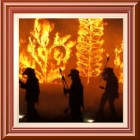




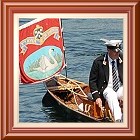

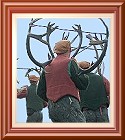
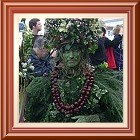


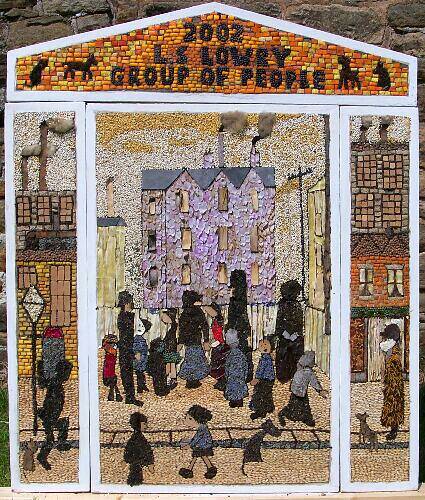
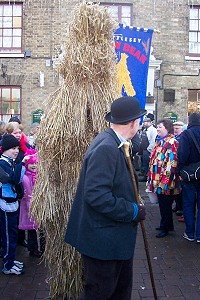
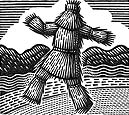
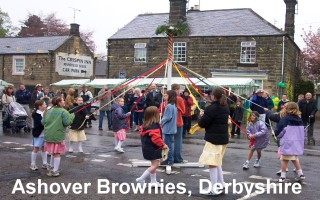
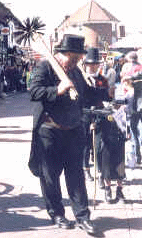

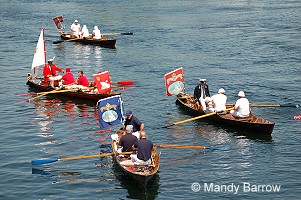 Each
year a group of herdsmen, including The Queen’s
Swan Marker dressed in a red costume, and Swan Wardens of the Worshipful
Company’s of Dyers and Vintners head up the River Thames in six
rowing boats from Sunbury to Abingdon marking swans along the way according
to their ownership. In a tradition dating back to Edward IV’s
reign, when he sold the swans for money, they are captured to determine
their ownership by the marks on their beaks and then their offspring
are marked accordingly. Swans belonging to Dyer’s get one nick
in their beaks, the Vintners two notches and the Queen’s remain
unmarked. You can watch the action from the towpaths along the river
course.
Each
year a group of herdsmen, including The Queen’s
Swan Marker dressed in a red costume, and Swan Wardens of the Worshipful
Company’s of Dyers and Vintners head up the River Thames in six
rowing boats from Sunbury to Abingdon marking swans along the way according
to their ownership. In a tradition dating back to Edward IV’s
reign, when he sold the swans for money, they are captured to determine
their ownership by the marks on their beaks and then their offspring
are marked accordingly. Swans belonging to Dyer’s get one nick
in their beaks, the Vintners two notches and the Queen’s remain
unmarked. You can watch the action from the towpaths along the river
course.